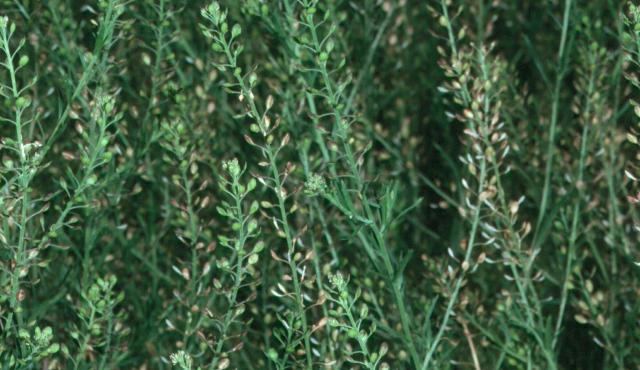
Basalt Pepper-cress
Lepidium hyssopifolium
Upright multi-branched herb growing to 50 cm tall and 50 cm wide. Narrow leaves at base very divided or toothed. Stem leaves are rough, narrower, 1-4 cm long with an ear-like lobe at their base. Tiny green inconspicuous flowers held on softly hairy stalks.
| Details | |
|---|---|
| Flora Type | Herbs |
| Distinctive Features | Leaves and stems covered in soft hairs. Elliptical seed hairy pods with a central fine tip (which is the style). |
| Biology | Perennial. Free-draining soils in open ground such as under introduced conifers where the species is free from competition. Each plant produces many seeds that readily germinate, especially in disturbed soil including animal diggings, however most of the seedlings do not survive. Grazing is a major threat. The plant is able to persist after fire and resprout after slashing. |
| Native Status | Native |
| Flowering Time | Sep-Mar |
| Taxonomy | |
|---|---|
| Phylum | Tracheophyta (Vascular Plants) |
| Class | Magnoliopsida (Flowering Plants) |
| Order | Brassicales |
| Family | Brassicaceae |
| Genus | Lepidium |
| Species | hyssopifolium |
This endangered plant produces glucosinolate compounds which may have benefits as a natural pesticide, in addition to nutritional, therapeutic and prophylactic properties. All Lepidium are anti-scorbutic. The leaf and stems of Lepidium species were used by Aboriginal peoples as a food source, steaming them as a green.
| Interesting Facts | |
|---|---|
| Native Status | Native |